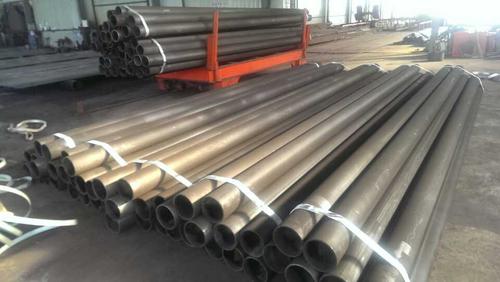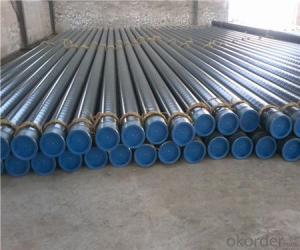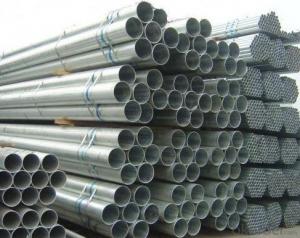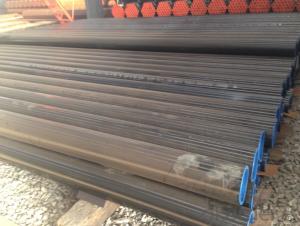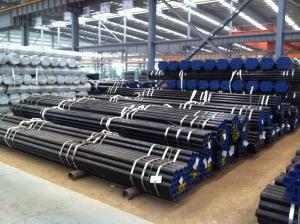Hot Rolled API 5L Seamless Tube
- Loading Port:
- Tianjin
- Payment Terms:
- TT OR LC
- Min Order Qty:
- -
- Supply Capability:
- 20000ton m.t./month
OKorder Service Pledge
OKorder Financial Service
You Might Also Like

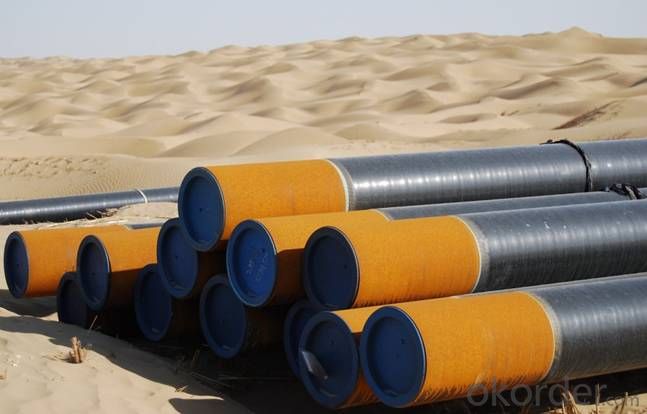
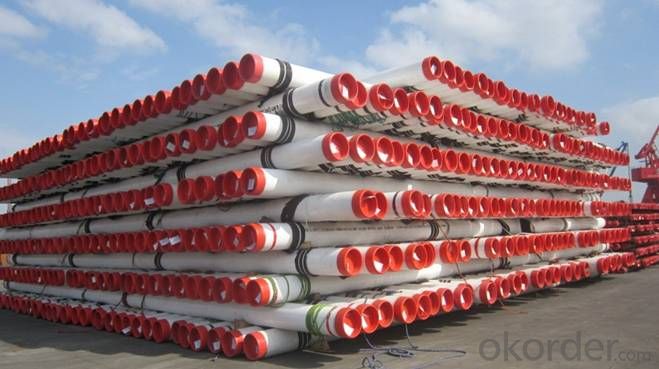
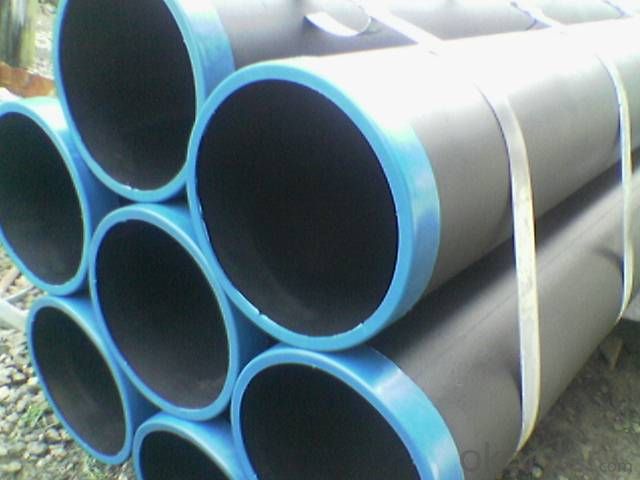
Product Descriptions :Hot Rolled API 5L Seamless Tube
The Hot Rolled Seamless Tube is manufactured through automatic continuous tube rolling mills.Precisely temperature (recrystallization temperature) controlling is required during different rolling processes,like initial rolling stage,finish rolling stage and curling stage,to achieve microstructure and mechanical structure of steel plates,Thus,they can be deformed to a large extend
Our mill could produce hot rolled seamless tube in ASTM,EN,GB,BS,DIN,GOST,JIS standard,it is our great honor to pass API,CE,ISO,CCS certificate,it proves that our goods are meet the high quality,this make us has obtained a great huge number of customers from abroad.
1. Executive standards:
ASTM A106,ASTM A53,API 5L,EN10216,EN10217,EN10219,EN10210,BS3601,BS3087,DIN1626,DIN1629,DIN17175,GOST 8732,GOST 8734 and so on
2. Specification range
OD: 1/8"-36"(219mm,325mm,406mm,508mm,457mm,558mm, 609mm,914mm,660mm,711mm,762mm is our advantages)
WT: SCH10-SCHXXS
3.Materials:
A53B,A106B,API5LGR.B,X42,X46,X52,X56,P195TR1,P235TR1,P265TR1,P195TR2,P235TR2,P265TR2,P245,P195GH,
L290,L360,P235GH,P265GH,S275JRH,S275J2H, S355J2H,ST35.8,ST45,ST45.8,ST44.2,ST44.3,ST52.3 and so on
4. Testing: We accept any test as your required
5. Packing of hot rolled seamless tube: Bundles,black painted,capped ends
WEIGHT per Kg. / Mtr.
ASTM PIPE SCHEDULE: Wall Thickness in MM, Wt = Weight in Kg. / Mtr.
| Nominal | Pipe size | OD mm | Schedule STD | Schedule 40 | ||
| Mm | Inch | Wall | Wt. | Wall | Wt. | |
| 3 | 1/8 | 10.3 | 1.73 | 0.37 | 1.73 | 0.357 |
| 6 | ¼ | 13.7 | 2.24 | 0.63 | 2.24 | 0.625 |
| 10 | 3/8 | 17.1 | 2.31 | 0.84 | 2.31 | 0.84 |
| 15 | ½ | 21.3 | 2.77 | 1.26 | 2.77 | 1.26 |
| 20 | ¾ | 26.7 | 2.87 | 1.69 | 2.87 | 1.68 |
| 25 | 1 | 33.4 | 3.38 | 2.5 | 3.38 | 2.5 |
| 32 | 1 1/4 | 42.2 | 3.56 | 3.39 | 3.56 | 3.38 |
| 40 | 1 1/2 | 48.3 | 3.68 | 4.05 | 3.68 | 4.05 |
| 50 | 2 | 60.3 | 3.9 | 5.44 | 3.9 | 5.44 |
| 65 | 2 1/2 | 73 | 5.2 | 8.63 | 5.16 | 8.63 |
| 80 | 3 | 88.9 | 5.5 | 11.3 | 5.5 | 11.3 |
| 90 | 31/2 | 1.6 | 5.74 | 13.57 | 5.74 | 13.57 |
| 100 | 4 | 114.3 | 6.02 | 16.07 | 6.02 | 16.07 |
| 125 | 5 | 141.3 | 6.6 | 21.77 | 6.55 | 21.77 |
| 150 | 6 | 168.3 | 7.11 | 28.26 | 7.11 | 28.26 |
| 200 | 8 | 219.1 | 8.2 | 42.5 | 8.2 | 42.5 |
| 250 | 10 | 273 | 9.27 | 60.3 | 9.27 | 60.3 |
| 300 | 12 | 323.9 | 9.53 | 73.8 | 10.3 | 79.7 |
| 350 | 14 | 355.6 | 9.53 | 81.3 | 11.13 | 94.3 |
| 400 | 16 | 406.4 | 9.53 | 93.3 | 12.7 | 123 |
| 450 | 18 | 457.2 | 9.53 | 105 | 14.3 | 156 |
| 500 | 20 | 508 | 9.53 | 177.2 | 15.1 | 183 |
| 550 | 22 | 558.8 | 9.53 | 129 | ||
| 600 | 24 | 609.6 | 9.53 | 141 | 17.4 | 255 |
- Q: How are steel pipes marked for identification and traceability?
- Various methods are utilized to mark and trace steel pipes for identification purposes. One prevalent technique involves the use of permanent markers or paint. These markings typically encompass vital information such as the manufacturer's name or logo, the pipe's dimensions and specifications, and the production date or batch number. Aside from surface marking, steel pipes may also be identified through the utilization of tags or labels. These tags are commonly constructed from durable materials such as metal or plastic and are securely affixed to the pipe. They entail comprehensive details regarding the pipe, including its unique identification number, material composition, and any pertinent certifications or standards it adheres to. Another method employed for identification and traceability encompasses the application of barcodes or QR codes. These codes can be scanned using specialized equipment or mobile applications, instantly granting access to comprehensive information concerning the pipe's origin, production process, and quality control measures. Barcodes and QR codes offer a more efficient and automated means of monitoring and tracing steel pipes throughout their lifespan. Moreover, some steel pipes may feature embossed or engraved markings directly on their surface. These markings are typically etched into the metal and possess the ability to withstand harsh conditions, ensuring long-term visibility and legibility. The ultimate objective of marking steel pipes is to guarantee their accurate identification and traceability throughout their lifespan. This aids in quality control, maintenance, and inspection procedures, as well as ensuring compliance with regulatory requirements. Clear and permanent markings enable manufacturers, suppliers, and users to effortlessly track and trace the history and specifications of steel pipes, facilitating better management and accountability in diverse industries such as construction, oil and gas, and infrastructure development.
- Q: What are the different methods of pressure testing steel pipes?
- There are several methods of pressure testing steel pipes, including hydrostatic testing, pneumatic testing, and ultrasonic testing.
- Q: How are steel pipes protected against lightning strikes?
- Steel pipes are protected against lightning strikes by installing lightning rods or grounding systems on top of the structures where the pipes are located. These systems help to divert the electrical discharge from lightning strikes, reducing the risk of damage to the steel pipes.
- Q: Are steel pipes suitable for nuclear power plants?
- Steel pipes are an ideal choice for nuclear power plants. This is because steel is a commonly used material in the construction of these plants, thanks to its exceptional mechanical properties, high strength, and durability. Various applications in nuclear power plants rely on steel pipes, including the transportation of cooling water, hot gases, and steam. The steel used in nuclear power plants undergoes careful selection and testing to meet strict safety regulations and quality standards. This is crucial because these pipes must have outstanding resistance to corrosion and high-temperature environments. They are exposed to harsh conditions such as high pressure, high temperatures, and radioactive materials. Moreover, steel pipes have a long lifespan and require minimal maintenance. This makes them a cost-effective option for nuclear power plants. They can endure extreme conditions, ensuring the plant's safe and reliable operation. Additionally, steel pipes can be easily fabricated, installed, and repaired, which is vital for the efficient functioning of a nuclear power plant. In summary, steel pipes are highly suitable for nuclear power plants due to their strength, durability, resistance to corrosion, and ability to withstand extreme conditions.
- Q: Can steel pipes be used for underground water supply?
- Yes, steel pipes can be used for underground water supply. However, it is important to consider factors such as corrosion resistance and proper coating to protect the pipes from potential degradation caused by the surrounding soil and water chemistry. Additionally, regular maintenance and inspections are necessary to ensure the longevity and integrity of the steel pipes in underground water supply systems.
- Q: How do you clean and maintain steel pipes?
- To clean and maintain steel pipes, start by removing any dirt, debris, or rust using a wire brush or sandpaper. Then, wash the pipes with a mild detergent and warm water solution, using a cloth or sponge to scrub away any remaining grime. Rinse thoroughly with clean water and dry the pipes completely to prevent moisture-related issues. To maintain steel pipes, regularly inspect them for signs of corrosion or damage, and apply a protective coating or paint if necessary. Additionally, ensure proper drainage, avoid exposure to harsh chemicals, and promptly address any leaks or repairs needed to extend the lifespan of the pipes.
- Q: How do you calculate the flow rate through a steel pipe?
- The flow rate through a steel pipe can be calculated using the formula Q = A * v, where Q is the flow rate, A is the cross-sectional area of the pipe, and v is the velocity of the fluid flowing through the pipe.
- Q: What are the different types of corrosion that can affect steel pipes?
- There are several types of corrosion that can affect steel pipes, including general or uniform corrosion, pitting corrosion, galvanic corrosion, crevice corrosion, and stress corrosion cracking.
- Q: What are the common methods for inspecting the condition of steel pipes?
- Steel pipes can be inspected using a variety of methods to ensure their condition and integrity. These methods aim to identify any issues or defects that could potentially affect the pipes. 1. Visual Inspection: Inspectors thoroughly examine the pipes visually to spot any visible signs of damage such as corrosion, cracks, or leaks. They may employ tools like flashlights, mirrors, or borescopes to reach difficult areas. 2. Ultrasonic Testing: This method utilizes high-frequency sound waves to detect defects within the steel pipes. A transducer emits sound waves, and disruptions or reflections in these waves can indicate potential issues like cracks or thinning of the pipe walls. 3. Magnetic Particle Testing: Primarily used to detect surface cracks or defects, this technique applies a magnetic field to the pipe. Fine iron particles are then applied to the surface, and they accumulate at areas with surface defects, making them clearly visible. 4. Eddy Current Testing: This non-destructive testing method detects surface and near-surface defects in steel pipes. It involves passing an alternating current through a coil, inducing eddy currents in the pipe. Disruptions or changes in these eddy currents can indicate defects like corrosion or cracks. 5. Radiographic Testing: X-rays or gamma rays are used in this method to inspect the internal structure of steel pipes. X-ray film or a digital detector is placed on one side of the pipe, while the X-ray source is positioned on the other side. The rays penetrate the steel, and any irregularities or defects can be identified on the film or through digital imaging. 6. Dye Penetrant Inspection: This technique is employed to detect surface-breaking defects in steel pipes. A dye penetrant is applied to the pipe's surface, and after a specified time, a developer is used to draw out the dye from any defects, making them easily visible. Whether used individually or in combination, these methods provide a comprehensive inspection of steel pipes, ensuring their reliability and safety in industries like oil and gas, construction, and manufacturing.
- Q: How are steel pipes coated for underground applications?
- Steel pipes for underground applications are typically coated using a process called fusion bonded epoxy (FBE) coating. This involves applying a special epoxy powder coating to the surface of the steel pipe and then heating it to fuse the coating into a smooth and durable finish. The FBE coating provides excellent corrosion resistance and protects the steel pipe from the harsh underground environment.
Send your message to us
Hot Rolled API 5L Seamless Tube
- Loading Port:
- Tianjin
- Payment Terms:
- TT OR LC
- Min Order Qty:
- -
- Supply Capability:
- 20000ton m.t./month
OKorder Service Pledge
OKorder Financial Service
Similar products
Hot products
Hot Searches
Related keywords

